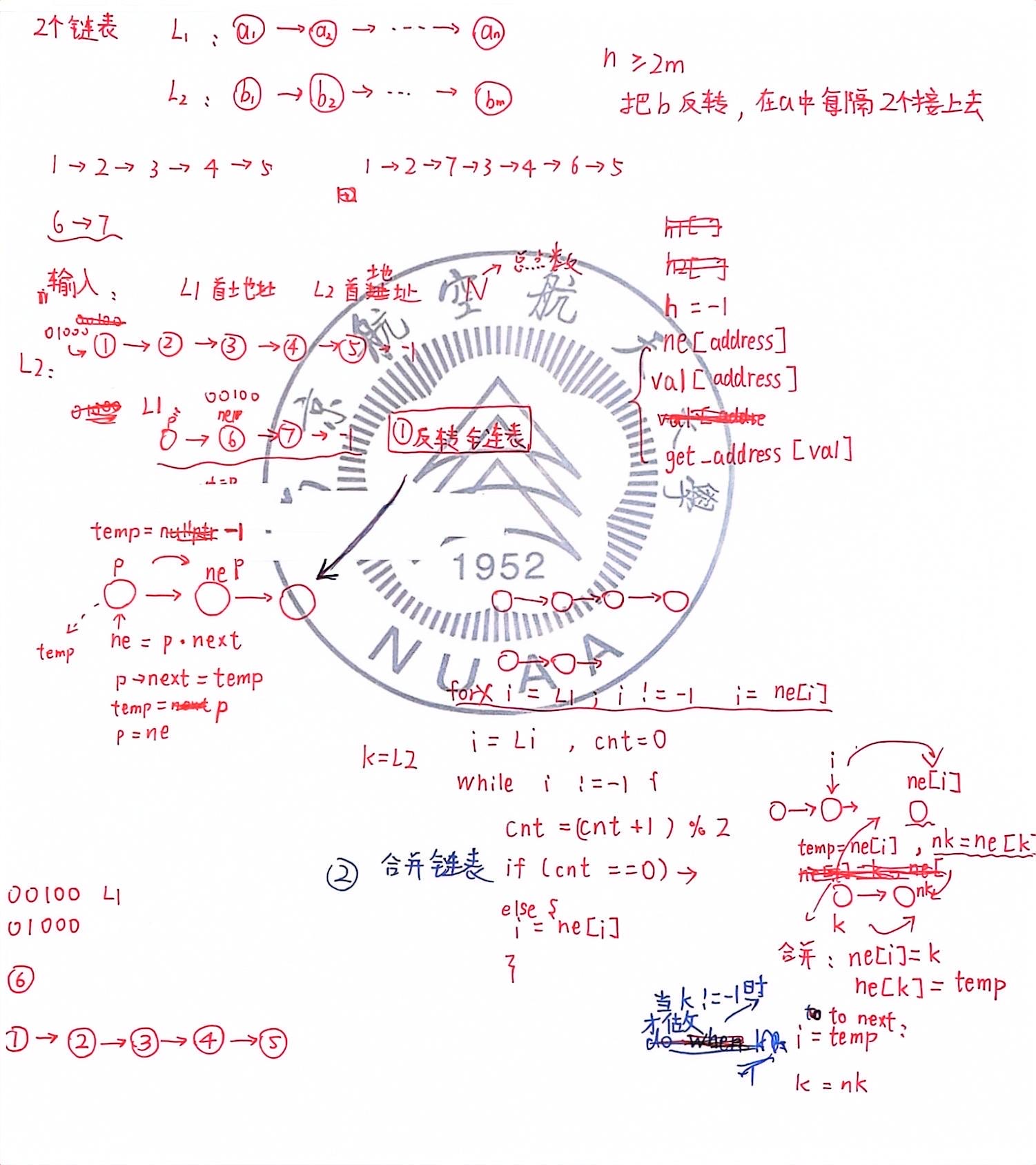
C++
#include <iostream>
using namespace std;
const int N = 1e5 + 10;
int h = -1, ne[N], e[N];
int address[N]; //given val, access address quickly
int L1, L2, n;
int get_len(int head)
{
int res = 0;
while (head != -1) {
head = ne[head];
res++ ;
}
return res;
}
int rev_list(int head)
{
int p = head, temp = -1;
while (p != -1) {
int ne_ars = ne[p];
ne[p] = temp;
temp = p;
p = ne_ars;
}
return temp;
}
void merge_list(int h1, int h2)
{
int i = h1, cnt = 0;
int k = h2;
while (i != -1) {
cnt = (cnt + 1) % 2; //judge whether there should merge node
if (!cnt and k != -1) { //cnt==0, and k still have nodes, it's time to merge
int tempi = ne[i], tempk = ne[k];
ne[i] = k, ne[k] = tempi;
i = tempi, k = tempk;
}
else { //normally traverse, the forward merging steps illustrate why i don't use for loop here
i = ne[i];
}
}
}
void print_list(int head); //help function used in debug
int main()
{
scanf("%d%d%d", &L1, &L2, &n);
for (int i = 0; i < n; i++ ) {
int ars, val, nev; scanf("%d%d%d", &ars, &val, &nev);
e[ars] = val, ne[ars] = nev;
address[val] = ars;
}
int len1 = get_len(L1), len2 = get_len(L2);
if (len1 < len2) swap(L1, L2); //make sure L1 is always the larger linked list
L2 = rev_list(L2);
//print_list(L2);
merge_list(L1, L2); //reverse L2 and merge L1 and L2
//print_list(L1);
int cnt = 0;
for (int i = L1; i != -1; i = ne[i]) { //print merged list begin with L1
if (cnt) puts("");
cnt++;
int val = e[i], ne_ars = ne[i];
if (ne_ars != -1) {
printf("%05d %d %05d", i, val, ne_ars);
}
else {
printf("%05d %d %d", i, val, ne_ars);
}
}
return 0;
}
void print_list(int head)
{
for (int i = head; i != -1; i = ne[i]) {
cout << e[i] << " ";
}
cout << endl;
}
